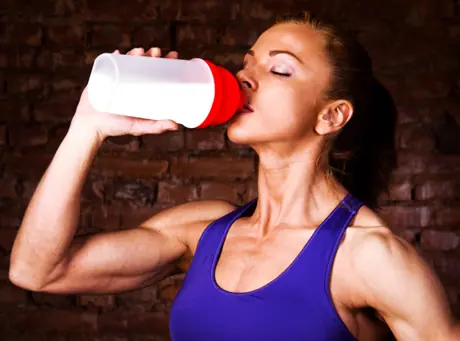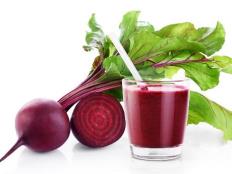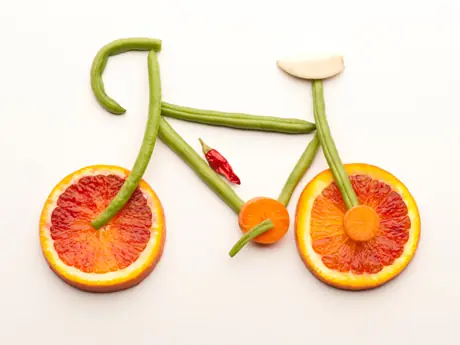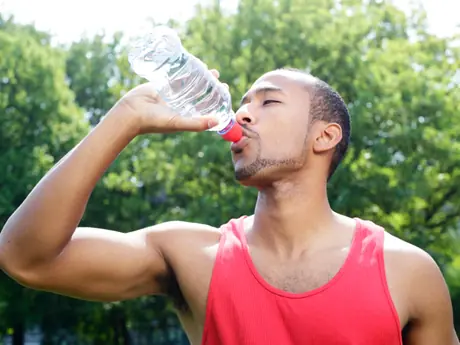
For amateur cyclists, one of the best reasons for cycling is the big appetite you can satisfy after a big ride. For pros, eating can be just as much a part of the job as the hours on the bike itself. We all know that part of proper recovery involves the right nutrition after a workout, but what factors affect post-exercise appetite and how might it impact recovery and weight control?
If you're like most amateur cyclists, part and parcel of the whole appeal of cycling is that it allows you to, in large part, indulge your desire to eat. While weight control is good and important for all cyclists, we rarely have to obsessively count our calories like the pros, who are trying to eke out as much weight loss as possible.
More: Carbohydrates: Fuel for Your Cycling
That's not to say that cycling is an excuse to eat all day, every day. One of the most important metrics of performance potential is the power-to-weight ratio. That is, how much power can you generate over differing durations compared to your weight? This is all-important for much of cycling and multisports, due to the effects of climbing and gravity.
Simply put, the more you weigh, the more power you will need to haul yourself uphill. Therefore, there are two simple approaches to riding faster: 1) increase your power, and 2) decrease your weight. So famous climbers like Marco Pantani, Alberto Contador, or Andy Schleck may not generate the massive absolute wattages like Tom Boonen, Thor Hushovd, and Fabien Cancellara. However, they can still generate solid power and weigh very little, resulting in a very high power-to-weight ratio that allows them to climb at world-class levels.
So appetite and nutrition needs to fluctuate and potentially periodize, just like your training. We know that the offseason is an easy time to gain a lot of weight, due to less physical activity and also more food availability, especially around the holidays. But the question is a little deeper than that. Does physical activity, both its presence and its absence, affect our appetite and how much we voluntarily eat? In other words, how good are we at subconsciously regulating our appetite and food consumption based on our level of physical activity? And do factors such as dehydration affect our appetite?
More: Determine Your Century Nutrition Plan
The Study
The question of appetite regulation was the topic of a study this year by a research group from Perth, Australia in the March 2012 issue of the prestigious Medicine & Science in Sports & Exercise journal (1). Specifically, they investigated whether, after a period of running with or without fluid replacement, voluntary food consumption would differ, comparing it also to a control condition where no exercise was performed. Study details:
More: 10 Ways to Manage Offseason Weight Control
- Ten physically fit university-aged males were employed. They were not specifically competitive athletes, and women were excluded due to the potential confounding effects of changes in appetite through the menstrual cycle. Subjects did not have any dietary restrictions or medications.
- As with any study where voluntary patterns were critical, the study employed a bit of deception to ensure the subjects did not consciously change their eating patterns. Here, the subjects were told that the study was investigating markers of muscle damage in a normal and dehydrated state.
- Subjects were asked what breakfast foods they typically preferred so that there were no confounding factors from novel foods. After each trial, they were provided with a buffet-style breakfast spread for 30 minutes, and told to eat as they desired until full. Food intake was then determined from weighing food portions before and after.
- The three conditions involved fasting from 9 p.m. the night before and arrival to the lab at 7 a.m. The conditions were: 1) control where subjects laid down for 45 minutes; and 45 minutes of treadmill running at 75 percent VO2peak while either 2) euhydrated (0-1 percent body mass loss) or 3) dehydrated (1-2 percent body mass loss).
- The dehydrated state was achieved by contacting the subjects the day prior, and asking/reminding them to minimize fluid intake from 5 p.m. onwards, and also not to drink anything the morning of the experiment.
More: Fueling Up for the Ride
- 1
- of
- 2








Discuss This Article